Hey everyone! This how to start a blog post helps you generate passive income via blogging.
Have you ever wondered how to start a blog and make enough money through blogging?
Many people are already finding great success in blogging.
Making $500,000 per month is really very difficult, but making $5000 per month is much easier.
Don’t have any idea where to start, right? Well, The same thing happened to me, I was also overwhelmed with many confusing options, I wanted to make passive income online but in a smart way, so I started researching on the internet.
Finally, I started my personal blog, AmolBiranje.com in just a few minutes and started publishing blog posts.
The reason i started this blog is to share with everyone, to add a value in people’s lives.
So I have created this easy step-by-step guide that allows anyone from anywhere to start a successful blog without any technical skills, it does not matter what level of experience you have, whether you are a newbie or belongs to any specific industry, it really doesn’t matter who you are, all I can say for sure, anyone can start easily as long as you have a strong desire and passion to make a big success in blogging.
I’m going to show you how to get started, It’s very easy and requires no technical skills, All you need is the passion to make money online.
Welcome to the step-by-step guide on how to start a successful blog that will help you to make money online.
How to Start a Successful Blog:
Step 1 – Choose A Domain Name And Get Your Web Hosting
I highly recommend using WordPress because it gives us greater control over the look and feel of our blog and is more user-friendly than any other platform.
And WordPress is free and open-source.
The first thing I did when I started a blog was go to TheHostLayer.com and register for a domain name, which is free with web hosting. I’ll explain web hosting in a moment, but let’s talk about your domain name first.
A domain name is the URL of a blog/website that a visitor will use to open your website.
Your domain name is an important part of starting a blog because it creates a first impression—it is the name of your blog or website. Also known as your URL, your domain is also your address on the web. For example, my domain name is (www.amolbiranje.com)
So, what do you want to call your blog? Maybe it’s YourName.com. Maybe it’s YourBusinessName.com. Or maybe it’s a creative brand name you thought up.
Here are some extra tips for choosing a perfect domain name:
- Choose a short and catchy name that anyone can remember.
- Always choose (TLD’s) Top Level Domains like .com .net or .org
- Avoid using numbers and hyphens
- Should be easy to say and understand
- Avoid complicated and commonly misspelled words
- When you land on an available name, click add it to your cart.
Don’t buy it yet. I’ll show you how to get your domain for free in the next step.
Once you’ve decided on a domain name, you’ll need to set up web hosting for your blog. While WordPress itself is free, you need a reliable space to host your WordPress blog (your blog needs to be on a server somewhere on the Internet).
For web hosting, I recommend TheHostLayer.com for several reasons:
I use TheHostLayer.com Services:
I personally use TheHostLayer.com to host all of my blogs and websites. TheHostLayer.com offers the best web hosting packages ranging from basic, intermediate to advanced which fulfills the requirements for blogs and websites.
Friendly Customer Support:
The HostLayer’s customer support is really amazing and friendly. Their technical support is available 24/7/365 to resolve any of your hosting-related issues. It doesn’t matter if it’s 3.00 AM or the middle of your working day. If you have any queries, they are always available to help you through the entire setup process.
Great PricinG:
The HostLayer offers a special offer of a 50% discount for AmolBiranje.com visitors: starting only at $1.90 $0.95 a month. It is very cheaper to start your own blog.
Free Domain:
When you sign up for web hosting, The HostLayer will give you a free domain name, which allows you to avoid the additional fees associated with purchasing a domain on your own.
Money-Back Guarantee:
The HostLayer offers a 30-day money-back guarantee, so there’s no risk if you change your mind.
Reliability:
The HostLayer’s facilities are world-class. Featuring 300,000 sq. ft. of the world-class data center in Houston, TX, and Provo, UT with enough backup generators to power a city.
Friends & Family:
Many of my friends/ families and my clients also use TheHostLayer.com to host their blogs and websites.
Now it’s time to get your blog live. Go to TheHostLayer.com and click the Get Started NOW button.

Next, choose your web hosting plan.
You’ll see three different plans. Select the Basic Plan for $0.95/month. It includes everything you need to just get started. And you can always upgrade later if you need to. So, for now, select the Basic Plan.
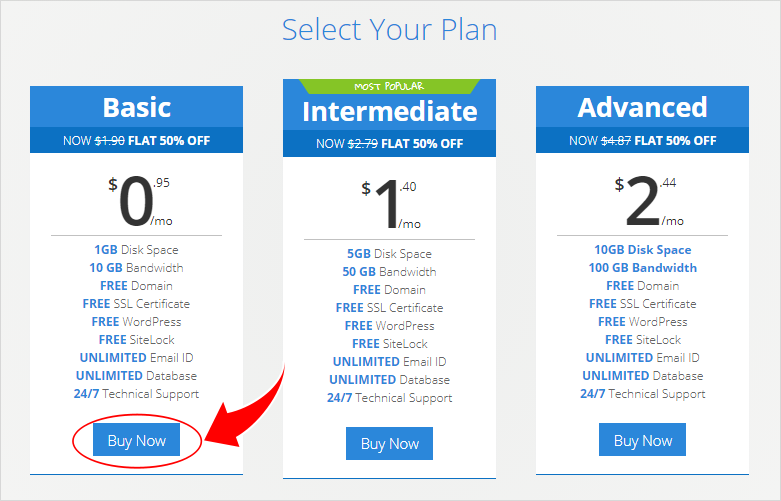
Once you select your plan you’ll choose to Register a domain name.
Your domain name will be your website’s address. You can register a new domain for free or use one you already own.
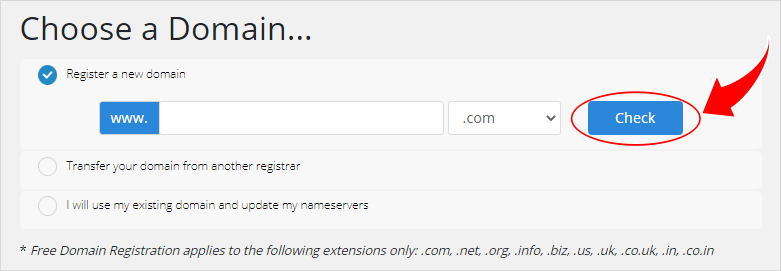
Once you click on check, you can see the list of available domain options, you can add the one which you want and continue.
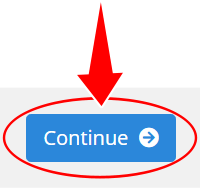
You can review and checkout for the further step, as mentioned, you get a free domain and free SiteLock website security, and FLAT 50% OFF as a special discount, which is an amazing deal to get you started at a very cheaper investment.
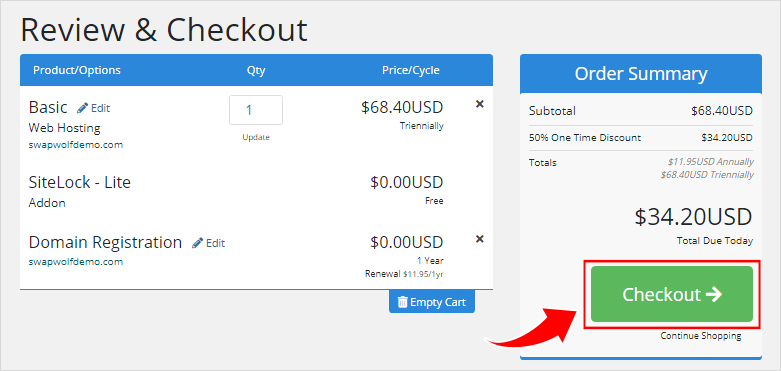
Confirm your product/options and click checkout.
Once you land on the checkout page, Enter your personal details, and billing information, Choose your preferred payment method, and Complete the Order.

Once you receive order confirmation, you’re done with the hardest part!
Congrats! 👍
Step 2 – Install WordPress
After you get a free domain with your web hosting account, you can log in via the Client Area using your login details received in the email.
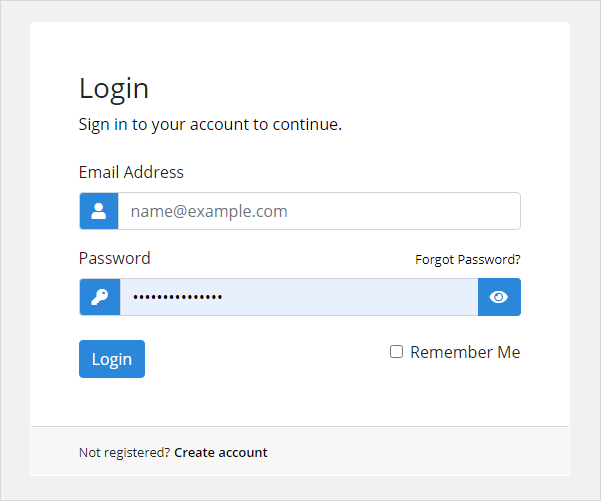
Once you successfully logged in to the client area, click on Services.

In the products & Services section you will see the status, Click Active.

The HostLayer provides quick shortcuts to make it easy for you to set up a WordPress website, simply scroll down and click “Install WordPress“ This will take you to the final step for the installation of your new WordPress blog.
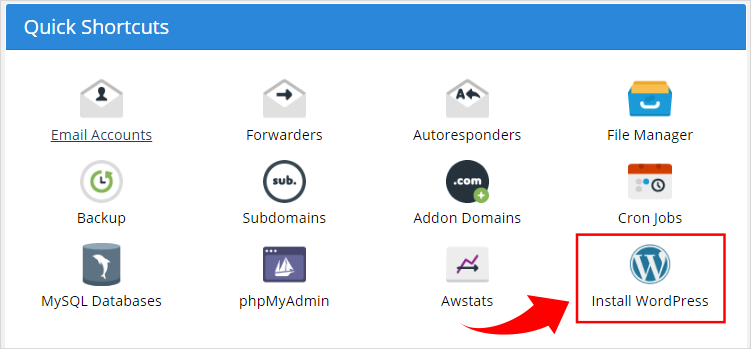
You will be taken to the WordPress Management in the new tab of your browser. Click Install.

Now you are at the final step for your WordPress blog to go live. All you need to do is enter a few details like a name and description, Also set your username with a strong password.
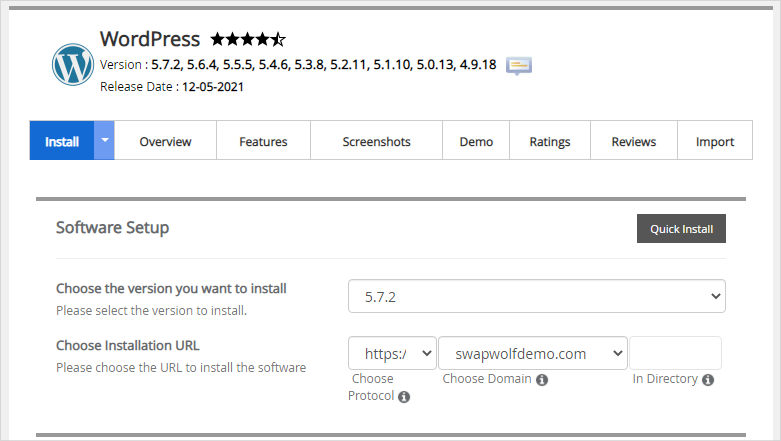
Let the rest settings remain as default, scroll down and click “Install“.
Within a minute, you’ll have your own fully functional WordPress blog up and running.
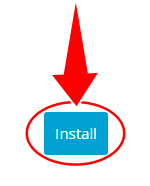
Congratulations.
You have successfully installed your WordPress Blog.

Step 3 – Install And Customize WordPress Theme
A WordPress theme is a collection of templates, files, and stylesheets that dictate your blog design.
In the world of blogging and website, WordPress designs are called themes. Right now, your blog might look something like this:
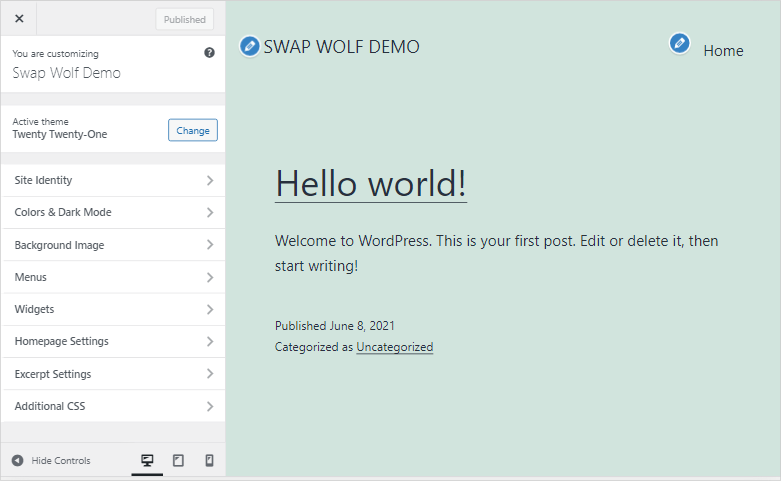
This is the default WordPress theme, and on the left side is a menu that helps you change its appearance.
There are thousands of themes to choose from. You can either get a free theme with limited options or go with a premium theme.
I recommend you get a premium theme from sites like Themeforest or Elegant Themes for your blog.
You can also get a customized blog/website design from TheHostLayer.com Website Design Services.
Here’s how you can install a new theme for your WordPress website:
First, you need to log into your WordPress admin. You can access this by going to yourdomain.com/wp-admin.
Here, you’ll need to enter your user credentials to log in.
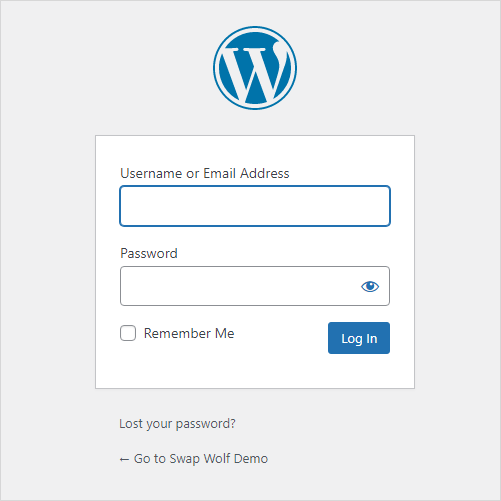
Once you are logged in to WordPress Admin, the dashboard might look a little this:
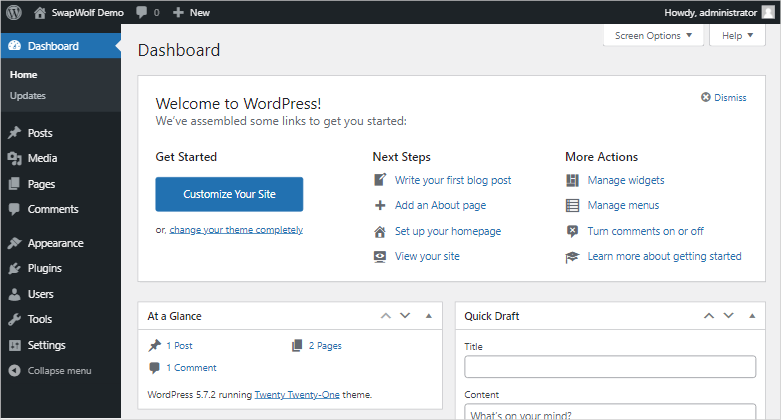
To install a new theme, click on the “Appearance” menu in the sidebar and click “Themes.”

WordPress comes with a few themes – their “Twenty Twenty-Series” themes.
To search for the best theme options, Click the “Add New” button at the top to get access to thousands of WordPress themes.

You can scroll down and preview as many WordPress themes as you want before picking one for your blog.
WordPress has a collection of themes based on “Featured, Popular, and Latest, you can also search on Feature Filter” which lets you search for the specific theme that fits you.

Once the installation is complete, click the “Activate” button and you’re all set.
To install an external theme from a site like ThemeForest and ElegantThemes go to “Appearance” – “Themes” and click “Add New,” upload the zip file, Click install and Activate.
Step 4 – Install Plugins
Plugins are sets of tools that integrate with your blog and extend its features.
When starting a blog, it’s important to choose the best ones for SEO and site speed.
Yoast SEO
#1 WordPress SEO Plugin, I use Yoast SEO to manage my sitemap, robots.txt, page title, and meta descriptions. It is the best and makes it very easy to rank your blog in search results.
The most-used SEO plugin, and has helped millions of people like you to get ahead, and to stay ahead.
From your WordPress dashboard go to Plugins > Add New.
Search Yoast SEO
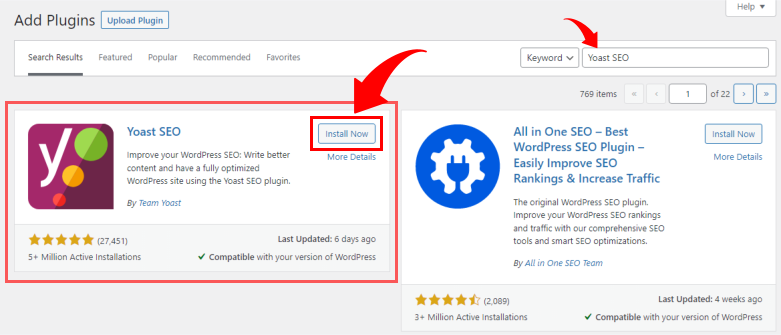
Then click Install Now and Activate, and your blog will immediately have an improved SEO.
W3 Total Cache
One of the best ways to improve the performance and reduce the load time of your blog is to use plugins. W3 Total Cache (W3TC) improves the SEO, Core Web Vitals, and overall user experience of your blog.
Trusted by millions of bloggers, web developers, and web hosting providers worldwide for more than a decade. It is the total performance solution for optimizing WordPress blogs.
From your WordPress dashboard go to Plugins > Add New.
Search W3 Total Cache
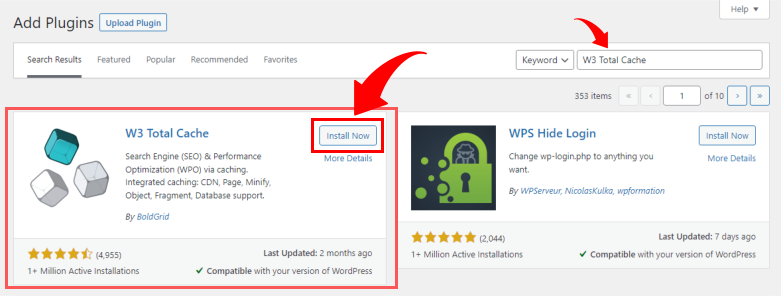
Then click Install Now and Activate, lastly Enable the Page Cache to decrease the response time of the site, Enable Minify to reduce load time by decreasing the size and number of CSS and JS files.
You can also test the rest of the features according to your requirements.
Step 5 – Promote Your Blog
Congratulations!
You have successfully started your new blog, and now it’s time to start blogging.
To promote your newly created blog, the best strategy is to do whatever it takes to build backlinks to your blog.
It’s like the more backlinks you have, the more Google will take you seriously and rank your new blog post quickly after you publish it.
Here are the secret strategies to promote your newly created blog:
Guest Blogging
Guest blogging is one of the best ways to promote your blog.
It’s a great way to build authority in your niche, meet the other bloggers, get exposure on various forums related to your niche, and get backlinks.
It’s a hustle that includes cold email outreach and relationship building.
Firstly, don’t ever think about the benefits you’ll get from backlinks. You have to provide some value to others.
Link Building
Guest posting is one strategy to get links to your blog, but there are plenty of others as well.
Firstly, the best and easiest form of link building is passively getting links without any involvement or outreach.
People naturally link to the best content they can find. So how do you make sure your blog posts are “linkable”?
The basic entry fee to get into the game is that when you’re starting a blog, your content needs to be unique and high-quality.
To take your blog to the next level, just add unique content that doesn’t exist anywhere else like visual elements to your blog posts, infographics, videos, case studies, and statistics.
Some other link building strategies to try out after you set up a blog:
Competitor research:
View which websites are linking to competitors to come up with new sites to reach out to.
Link reclamation:
Input your blog’s URL into the Ahrefs Content Explorer tool to find instances where your brand is mentioned but not linked to. Here, you can reach out to the writer of the post, thank them for the mention, and ask if they can add the link to your post.
Link partnerships:
Connect with other bloggers from your niche to get links in their guest posts.
Broken link building:
Use a Ahrefs tool to find blogs in your niche with broken external links. You can send them an email informing them that their link is broken and that your resource will be a better option. This strategy is great because you’re helping them to fix their blogs having 404 errors and (hopefully) getting a backlink at the same time.
Search Engines And Blogging
You can have the best blog in the world – if you don’t have visitors then it doesn’t really matter, does it?
So how do get visitors to your blog? The answer is very easy – through SEO.
Listings in search engines are the primary method used by potential readers and subscribers to find out about new blogs.
If people can’t find you, if you aren’t ranked highly in search results, they won’t know you exist!
When you create a blog, keep in mind that the content that readers will love is great, but you also need to make sure that your blog should be found in search engines.
Although it takes time and patience, good rankings are achievable even if you have a brand blog so don’t give up hope.
The secret of achieving good rankings in search engines is not really a ‘big secret’ at all – it’s simply about making sure that Google knows what exactly each page of your blog is all about.
For example, instead of just saying “This blog post is about this” or “This blog post is about that”, use a language that reflects what future readers might type into Google when searching for information on the topic which is covered by your blog article.
Think of it as a good way to ensure that Google knows what your post is about – then you’ll organically start appearing in search results for the relevant searches.
SEO Title Tags
This appears in the search engine results and shows to people to click on your blog.
It can be the same, different, or similar to the title of your post, but most importantly it should make sense when people search for any specific words.
Also, search engines will shorten the title tag to about 160 characters so you should consider this as you are thinking of your SEO title.
And don’t forget to include the main keyword/s you are targeting in your title.
Meta Description
On-page SEO factors to consider are the meta description. These are basically the words that appear in your blog post on Google.
They are displayed on your page, so you have complete control over what Google thinks your post is all about.
Use these to give the readers a good idea of what to expect from your blog.
Sitemap
It helps the search engines direct search engine bots to your blog and also lets them know about all the pages you have in your blog.
It is very important, that you submit a sitemap via Google Search Console, as this ensures that new content added to your blog can be indexed as quickly as possible.
Pay attention especially to the categories and subcategories when creating your directory structure as this will be shown in the sitemap.
Making sure that you provide the search engines with as much information about your blog as possible is very important and valuable.
🖼️ How To Start A Successful Blog In 5 Steps (Infographic)

❓Frequently Asked Questions (FAQ’s)
What is a blog?
A blog is a website that is regularly updated by an individual or group. Most of the content is written text, which is usually written in a casual, conversational tone.
You may find a blog on almost any subject. It’s a terrific way for bloggers to grow their subscriber base, meet new people, and make money online.
What Are the Benefits of Starting a Blog?
There are numerous reasons for starting a blog.
The ability to influence and inspire internet readers is one of the most compelling reasons. If you have extensive expertise in your topic and good writing skills, you may actually assist others. If you properly monetize your blog, you can earn a great passive income.
Blogging can provide you with the opportunity to:
- Grow as a person.
- Improve your writing.
- Build new relationships and network in your area.
- Share your expertise with your audience; and
- Make a lot of money.
What Is the Cost of Starting a Blog?
When and how to start a blog, you can use either a free or paid blogging platform. Both have advantages and disadvantages.
If you’re a beginner and want to try your hand at blogging without spending any money, WordPress.com and Blogger are good free platforms for doing so. However, there are always limitations when using a free tool. For example, you will not have access to better themes, your access to adverts will be restricted, and so on.
Paid platforms, on the other hand, are a good option if you’re a seasoned campaigner or a rookie who knows what they’re doing with blogging.
Here are some of the essential expenses:
If you sign up with TheHostLayer.com you will get an offer that is much cheaper to start your new blog.
Get started with a basic web hosting package that you get for only $0.95 a month with Triennially Plus:
- Free domain name.
- Free SiteLock Website Security
- 1 Click WordPress Installation
- 24/7 Technical Support
- 30 day money back guarantee
Optional expenses include a premium WordPress theme if required (costing between $20 and $60), marketing tools, any additional plugins needed, plus those for other purposes, and more.
If you’re thinking about blogging as a hobby, it should be free. If you want to go into blogging full-time and invest in other features to grow your blog, it may cost you more than $50-$100 a year. It’s just like having a cup of coffee once a month.
How Can I Attract More Readers to My Blog?
You must provide value to your readers in order to attract them to your blog.
Here are some measures that will assist you in getting there:
- Master SEO – this cannot be overstated
- Write catchy headlines—the first thing someone reads is your headline. Enumerate the advantages to assist them in determining them. The optimal headline for a clickable link is: + year + odd number + superlative + target keyword
- Consistently publishing blog entries encourages your readers to consider you seriously
- Use CTA buttons and opt-in forms to get your viewers to take action
- Provide current readers with incentives such as product discounts and exclusive information.
- Use social media to spread the word about your articles.
- Implementing all of the aforementioned procedures can assist you in gaining initial momentum for your blog.
Do Bloggers Get Paid for Their Work?
They do, in fact. Bloggers can earn a lot of money if they work hard. Others do not generate any money from their blogs.
Bloggers get compensated mostly through the following methods:
- Advertisements
- Affiliate marketing
- Online courses
- Advertisements
- Consulting
It’s more difficult to make money if your blog postings don’t provide much value.
How Do Bloggers Earn Money?
Advertisements, affiliate commissions, course or ecommerce sales, and other methods of payment are available to bloggers. Earnings per click (EPC is the most prevalent statistic for determining how much you are paid in affiliate marketing (earnings per click).
CPM is another metric (cost per 1000 impressions). You are paid a set amount for every 1,000 hits on the ad.
In addition, you can offer things depending on your knowledge. You can also offer e-recipes of your finest meals if you have a food blog.
Offer something valuable to a subset of your audience and incentivize them to sign up for paid subscriptions. It might cost as little as $5 per person every month. However, if you can provide enough value to attract large numbers of customers, you can start to earn a relatively decent income.
What Is the Best Way to Start a Successful Blog?
In the United States alone, there are about 600 million blogs. However, 95% of them do not succeed. Successful bloggers are distinguished from unsuccessful bloggers by a number of variables.
Understanding market viability and audience revenue potential: Being well informed in digital marketing – you’ll need a good handle on SEO, keyword research, affiliate marketing, email marketing methods, and so on to establish and operate a successful blog.
- Having a strong sense of self-promotion
- Providing valuable information
- Providing consistent content
- Providing valuable information
- Providing consistent content
- Creating and adhering to a timetable
- Proactively engaging subscribers and addressing their concerns
What Is the Best Way to Start a Travel Blog?
The majority of people are enthusiastic about travelling. If you’re interested in doing the same, you can begin your travel blogging journey and earn money from your blog recommendations.
There are numerous travel affiliate networks that pay you to recommend hotels, Airbnb’s, travel gear, travel insurance, and other services.
- Here’s how to create a travel blog right now:
- The first step is to identify your blog’s sub-niche.
- There are numerous possibilities available, including solo travel, luxury travel, low-cost travel, family travel, and more.
- The next stage is to come up with a name that would appeal to your target audience right away.
- Create a web hosting account with TheHostLayer.com
- Find the ideal theme for your travel blog.
- Conduct keyword research and select a sub-niche within the travel industry.
- Publish travel articles depending on your knowledge, and make sure they’re properly formatted for SEO.
- Obtain guest posts and backlinks from other travel blogs.
What Is the Best Way to Start a Food Blog?
Some of the most widely-searched-for information on the web pertains to cooking and sharing recipes.
Because of the accessibility of modern life, foodies are more open than ever before to trying new dishes and flavours.It’s never been a better moment to start a food blog than now.
Here are some suggestions for doing so:
- Get started with TheHostLayer.com for web hosting service.
- Choose a name for your blog that is appropriate for your niche.
- Select a suitable theme for your food blog. The appropriate theme may quickly grab readers’ attention and help you grow your subscriber base.
- Conduct keyword research and select a sub-niche within the food industry.
- Start publishing and learning how to write SEO-friendly recipes.
- Other food blogs might provide you with backlinks and guest posts.
- You may want to look at ways to monetize your site in order to keep it going. Some methods include using third-party advertisements, affiliate marketing, and selling exclusive recipes.
Is it possible for me to use Google Adsense on my blog?
Yes, but Google Adsense has very strict rules about what it will and won’t accept.
When it comes to putting these types of advertisements on your blog, staying within the limitations of Google’s terms and conditions is crucial to avoiding any issues.
Is it possible for me to sell Amazon products on my blog?
Yes, you certainly can. In fact, Amazon has a plugin that is particularly meant to help consumers do this.
When it comes to selling products, the most important thing to remember is that they must be relevant and valuable to your current readers.
Is it necessary for me to back up my blog on a regular basis?
Using plugins that are available for most blogging systems, backups should be done automatically.
Whether you’re in your first year or your fifth, routinely backing up your blog should be a priority so that if disaster happens, you can pick yourself up and carry on as if nothing had happened.













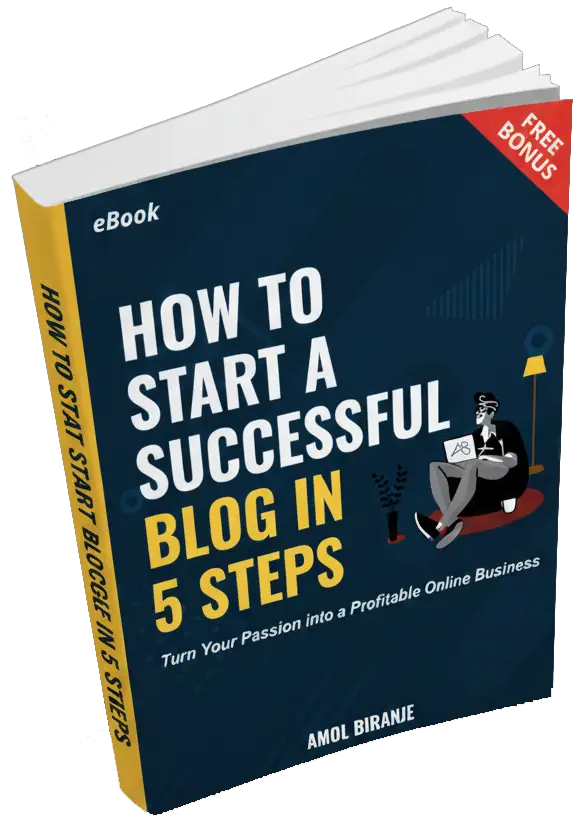
0 Comments